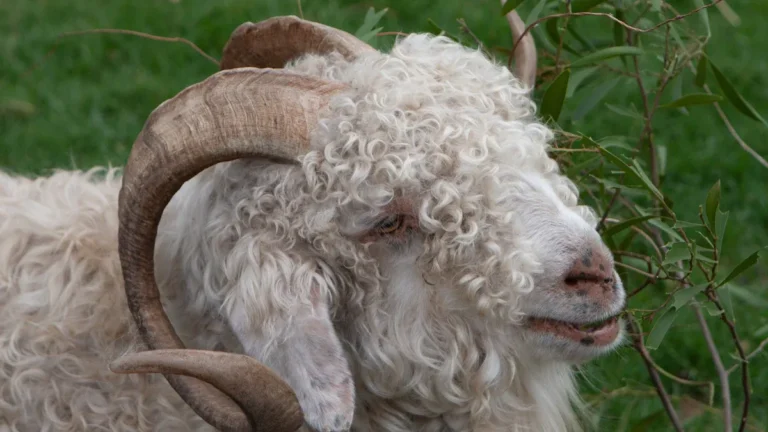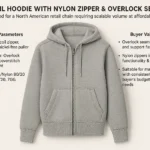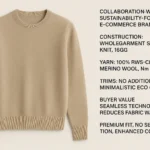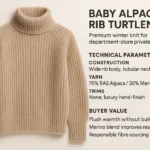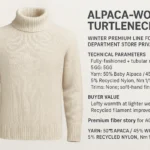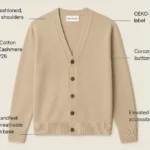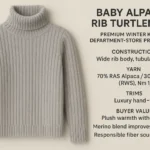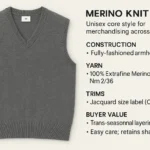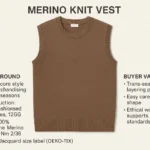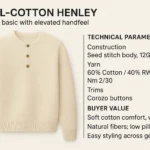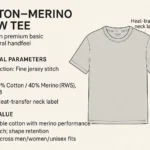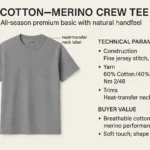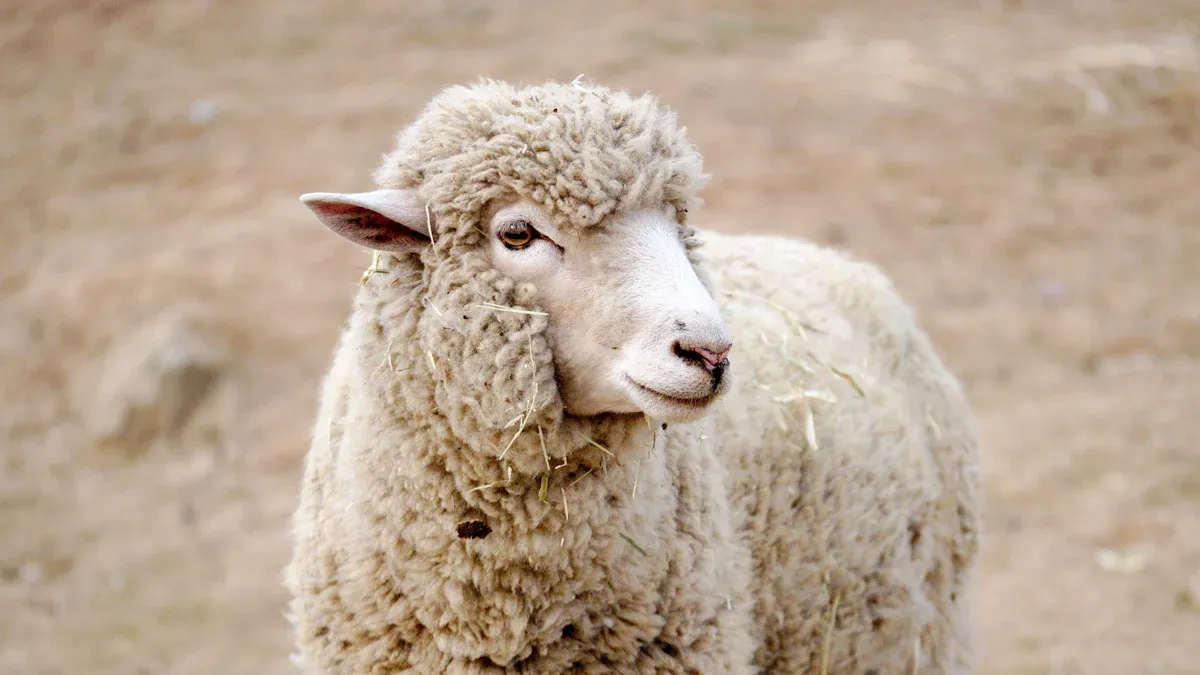
You get merino wool from Merino sheep. This wool is different because it feels very soft. It helps you stay comfortable in hot or cold weather. It does not smell bad easily. It also soaks up sweat and keeps its shape after you wash it. The table below shows why merino wool is special:
|
Attribute |
Description |
|---|---|
|
Softness |
Feels gentle on your skin |
|
Thermal Regulation |
Keeps your body temperature steady |
|
Odor Resistance |
Stops bad smells from building up |
|
Moisture-Wicking |
Pulls sweat away and dries fast |
|
Sustainability |
Comes from sources that can be replaced |
Key Takeaways
-
Merino wool feels soft and comfy, so it is great for daily use and sports. It helps control your body temperature. It keeps you warm in winter and cool in summer. Merino wool fights bad smells, so you can wear it many times before washing. This fabric pulls sweat away from your skin. It keeps you dry when you are active. Picking merino wool helps the planet. It is a natural and renewable material.
Merino Wool Basics
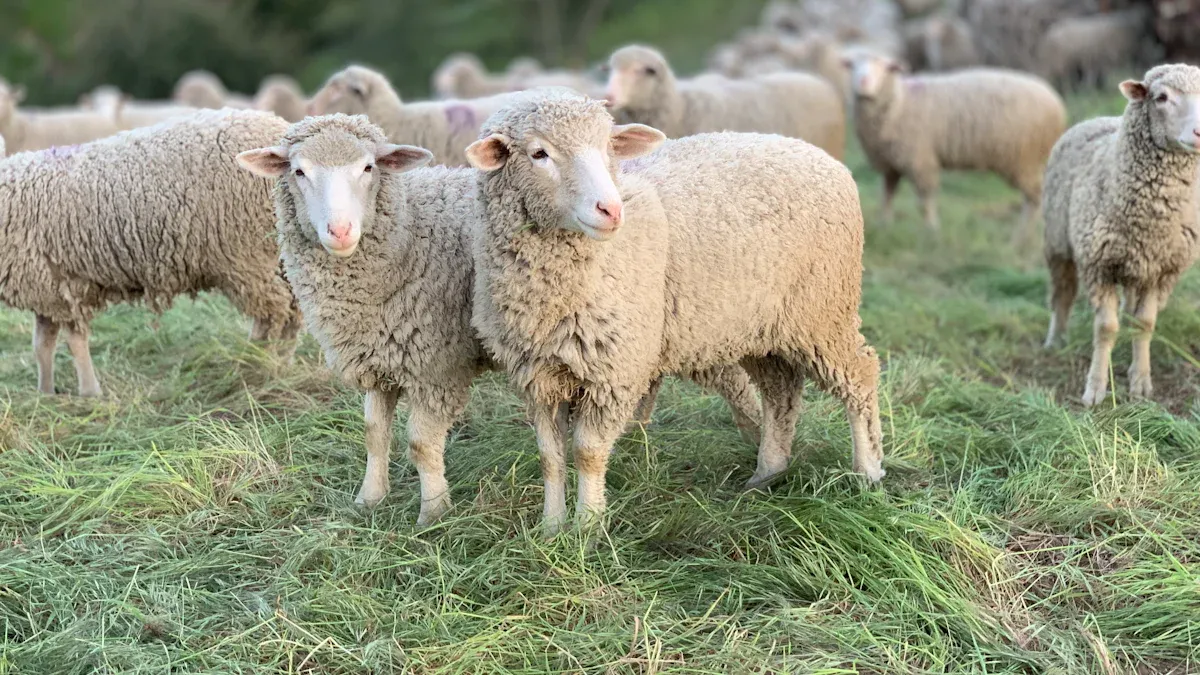
Origin
You might wonder where merino wool comes from. The story begins in Spain. People there bred Merino sheep for their fine wool. This careful breeding started many centuries ago. Here is a quick look at how merino wool spread across the world:
-
Merino sheep first appeared in Spain, where breeders focused on producing fine wool.
-
In the Middle Ages, Spain controlled the export of this wool, making it very valuable.
-
In the early 1800s, William Jarvis brought Merino sheep to Vermont in the United States. This move helped start the merino wool industry in America.
Today, you find merino sheep in many countries. Australian merino wool is famous for its high quality and softness.
Fiber Characteristics
You can feel the difference when you touch merino wool. The fibers are much finer than regular wool. This makes the fabric soft and gentle on your skin. Merino wool is a natural fibre, which means it comes from animals and not from chemicals or plastics. The fine fibers help prevent itching, so you stay comfortable all day.
Here is a table that shows how merino wool compares to other types of wool:
|
Wool Type |
Average Fiber Diameter (μm) |
Staple Length (mm) |
|---|---|---|
|
Merino |
18.26 |
>90 |
|
Dohne Merino |
20.66 |
N/A |
|
Shetland |
23 |
N/A |
You see that merino wool has the smallest fiber diameter. This gives it a soft feel and high quality. The staple length is also longer, which adds strength and flexibility.
Production
You might be curious about how merino wool becomes the fabric you wear. The process uses several steps to keep the quality high:
-
Shear the sheep to collect the wool.
-
Sort and clean the wool to remove dirt and grease.
-
Card the wool to untangle and align the fibers.
-
Spin the top to create long, smooth strands.
-
Weave or knit the strands into fabric.
-
Dye and finish the fabric for color and texture.
-
Create your finished garment.
Each step helps keep merino wool soft, strong, and ready for use. Because it is a natural fibre, merino wool is both renewable and gentle on the environment.
Merino Wool Benefits
Softness
Merino wool feels very soft when you touch it. The wool has tiny fibers that make it gentle. These fibers are even smaller than cashmere fibers. They are much softer than regular wool fibers. Merino wool clothes feel nice on your skin. You can wear merino wool socks all day. They do not feel scratchy or rough. Many people pick merino wool pants and shirts for comfort. The soft feel makes these clothes great for anyone who likes comfort.
Breathability
Merino wool lets air move through it easily. This helps you stay cool and comfy. Scientists tested merino wool in labs. They found it lets your skin breathe well. You do not get too hot or sweaty. Merino wool works better than cotton, polyester, or viscose. It keeps you comfortable in many temperatures. You can wear merino wool socks or shirts when you exercise. You still feel fresh on warm days.
Moisture Wicking
Merino wool pulls sweat away from your skin fast. It helps sweat dry quickly. Here are some facts about moisture wicking:
-
People have used merino wool for running and hiking for thousands of years because it keeps feet dry.
-
Synthetic fabrics cannot match the natural wicking and breathability of merino wool.
-
Merino wool can absorb up to 30% of its weight in moisture without feeling wet.
-
Polyester and nylon dry quickly but do not absorb moisture as well as merino wool.
When you wear merino wool socks or shirts, you stay dry. You feel comfortable even during hard activities.
Odor Resistance
Merino wool helps stop bad smells. The wool has a natural wax called lanolin. Lanolin keeps odor-causing stuff away. You can wear merino wool socks or shirts many times before washing. The wool soaks up moisture and keeps your skin dry. This makes it hard for bacteria to grow. The special fibers also keep bacteria from sticking to the fabric. Merino wool helps with odor, but you should still keep clean for best results.
Thermo-Regulation
Merino wool helps control your body temperature. The fibers soak up moisture from your skin. This keeps you warm when it is cold. It keeps you cool when it is hot. Merino wool gives better insulation than cotton or polyester. It helps manage your skin temperature and the air around you. You feel good in many different conditions. Some studies show merino wool lets heat escape when you get too warm. This makes it great for summer and winter. Temperature control is one of the best things about merino wool.
Anti-Static & Wrinkle Resistance
|
Property |
Explanation |
|---|---|
|
Wrinkle resistant |
Each merino wool fiber acts like a coiled spring, bouncing back to its original shape after bending. This helps your garments resist wrinkles. |
|
Anti-static |
Merino wool does not build up static electricity easily, so it attracts less dust and lint. |
Merino wool socks or shirts stay neat in your bag. You do not have to worry about static shocks. Your clothes do not stick to your body.
Non-Itchy Comfort
Most people think wool is itchy, but merino wool is different. Studies show superfine merino wool helps people with sensitive skin. People with eczema had less itching and better skin health. Even if your skin is sensitive, you can wear merino wool all day. The tiny fibers do not poke or scratch your skin. You get comfort without itch every time.
Sustainability
Merino wool is natural and renewable. It is a smart choice for the planet. Here is a table with facts about its impact:
|
Environmental Impact |
Description |
|---|---|
|
Water Efficiency |
Wool production uses a lot of water, but better groundwater use can help save water. |
|
Land Occupation |
Sheep farming uses a lot of land, but lower stocking rates in places like Australia help. |
|
Greenhouse Gas Emissions |
Most emissions come from farming, but processing and garment care also matter. |
|
Garment Lifetime |
Wearing your merino wool garments up to 400 times can cut environmental impacts by half or more. |
You help the planet when you pick merino wool clothes that last. Using waste wool in new ways lowers the impact. Washing less often also helps the environment. Merino wool socks and other items break down naturally when you are done with them.
Tip: If you choose merino wool, you get comfort and performance. You also help protect the planet at the same time.
Merino Wool vs Other Fabrics
Regular Wool
When you look at merino wool and regular wool, you see big changes in how they feel and work. Merino wool is much softer because its fibers are thinner. You do not feel itchy like with other wool. Here are some important things to know:
-
Merino wool does not wrinkle easily because of its special shape.
-
It soaks up sweat and helps keep your body at a good temperature.
-
The fibers can stretch a lot without breaking, so your clothes last longer.
Merino wool keeps you comfy if you are moving or sitting still. It can soak up a lot of moisture without feeling wet. This helps your skin stay at a steady temperature and stops chills when you cool down.
Regular wool can feel scratchy and heavy. It does not handle sweat or heat as well as merino wool. Regular wool may not feel good for daily use.
Synthetics
Polyester and nylon are used a lot in clothes. These fabrics are made from oil, which cannot be replaced. When you pick synthetic fabrics, you help make more pollution and greenhouse gases. Merino wool comes from sheep and breaks down in nature.
-
Tiny plastic bits from synthetic clothes pollute the ocean.
-
Washing these clothes can send lots of small pieces into water.
-
Making polyester makes twice as much carbon as making cotton.
-
Synthetic fibers hurt the earth because they come from oil.
-
Wool breaks down in a few years and helps the soil, but synthetics stay in landfills for a long time.
Cotton
Cotton is used in many clothes, but it does not work like merino wool. Cotton soaks up water and can feel cold or sticky when wet. Merino wool pulls sweat away and keeps you dry. You get better airflow and temperature control with merino wool.
|
Feature |
Merino Wool |
Cotton |
|---|---|---|
|
Moisture Management |
Pulls sweat away, keeps you dry and comfy. Can soak up a lot of moisture. |
Soaks up water, can feel cold or sticky when wet. |
|
Breathability |
Very breathable, keeps your temperature steady. |
Not as breathable, can trap heat and sweat. |
You can see that merino wool is more comfy and works better than cotton. It also lasts longer and stays fresh.
Drawbacks
Care
You have to be careful when you wash merino wool clothes. Most people say hand-washing is best. This keeps the fibers soft and strong. Some merino wool items can go in the washing machine. If you do this, use a gentle cycle and cold water. Hot water or rough washing can shrink the wool. It can also make it lose its shape. Merino wool needs more care than other wool. You must treat it gently so it does not get ruined.
-
Hand-wash merino wool clothes to keep them nice.
-
If you use a machine, pick a gentle cycle and cold water.
-
Do not dry with high heat. Lay the clothes flat to dry.
-
Never use bleach or strong soap.
Tip: Always read the care label before you wash. Taking care of your clothes helps them last longer and stay comfy.
Cost
Merino wool products usually cost more than regular wool or synthetics. The higher price comes from making better fibers. Merino wool is a special material. You pay more for its comfort and how well it works. Synthetic fabrics are cheaper because they are easier and faster to make.
Here are some reasons why merino wool is expensive:
|
Factor |
Description |
|---|---|
|
Production Processes |
Spinning and knitting need special skills and machines. |
|
Market Dynamics |
High demand and not much supply make prices go up. |
|
Geographic Influences |
Farming and shipping from far places add to the cost. |
-
More people want merino wool, so prices go up.
-
There is not a lot of merino wool, so it is harder to get.
-
Taxes and trade rules can change the price.
You spend more money on merino wool, but you get better comfort and quality. Many people pick it even though it costs more.
How Azknit Uses Merino Wool for Superior Knitwear

Innovative Spinning and Knitting Techniques
Azknit uses new ways to spin and knit. Special machines twist and knit the fibers tightly. This keeps the fabric strong and smooth. The fabric does not get fuzzy or lose its shape. You will see fewer holes in your clothes. The fabric feels soft when you touch it. Socks and shirts last longer because of high-density knitting. You can wear them many times before they wear out.
Enhanced Comfort and Performance
Azknit products feel soft on your skin. The fabric moves with you as you walk or run. Merino wool pulls sweat away from your body. You stay dry during sports or work. The material soaks up bad smells, so you can wear it longer. You do not need to wash it every day. Azknit uses thicker fabric for more strength. Thin tops can get holes fast, but thick ones last longer. You get both comfort and strong clothes.
-
Odor resistance lets you wear them many times.
Sustainable and Ethical Sourcing
Azknit cares about the earth and animals. The company follows rules to protect sheep and land. They have special certifications to show this:
|
Certification Name |
Fiber Type |
Key Focus Areas |
|---|---|---|
|
Responsible Wool Standard (RWS) |
Wool |
Animal welfare, land management, social responsibility |
|
ZQ Merino Standard |
Merino Wool |
Ethical sourcing, animal welfare |
|
Woolmark |
Wool |
Quality assurance, sustainability |
|
Soil Association |
Wool |
Organic standards, environmental impact |
|
Climate Beneficial by Fibershed |
Various |
Sustainable grazing practices |
Azknit uses solar power and electric machines to cut pollution. This saves a lot of CO2 each year. Merino wool comes from sheep and breaks down in nature. It does not make microplastics. When you pick Azknit, you help keep the planet clean.
You can tell merino wool is different from other fabrics. It feels soft and can stretch without breaking. You stay comfortable in hot or cold weather. Clothes made from it last a long time. You do not have to wash them as often. Many companies use this wool for sports and daily clothes. It lets air move through, stops bad smells, and is good for the earth. That makes it a smart pick for your closet.
-
Soft and stretchy so you feel good
-
Keeps you comfy in every season
-
Strong and simple to take care of
Pick merino wool if you want comfort, care for the planet, and look good every day.
FAQ
What makes merino wool different from regular wool?
You notice merino wool feels much softer than regular wool. The fibers are finer and smoother. You can wear it next to your skin without feeling itchy.
Can you wear merino wool in warm weather?
Yes, you can. Merino wool breathes well and helps your body stay cool. It pulls sweat away from your skin and dries quickly.
How do you wash merino wool clothing?
You should use cold water and a gentle cycle. Lay your clothes flat to dry. Avoid bleach and high heat. Always check the care label first.
Does merino wool cause allergies or itchiness?
Most people do not feel itchy when wearing merino wool. The fine fibers help prevent irritation. People with sensitive skin often choose it for comfort.
Is merino wool eco-friendly?
Yes. Merino wool comes from sheep and breaks down naturally. It does not create microplastics. You help the planet when you pick this fabric.




